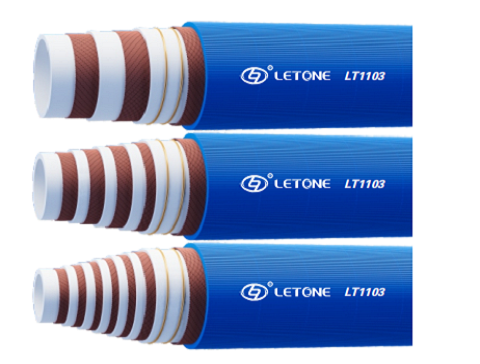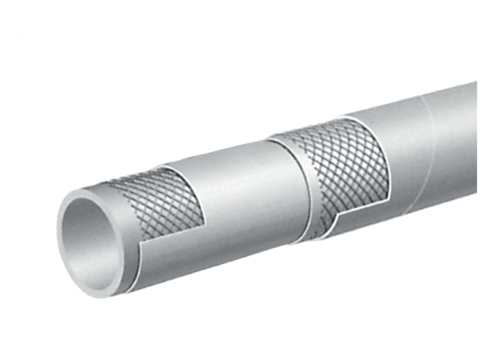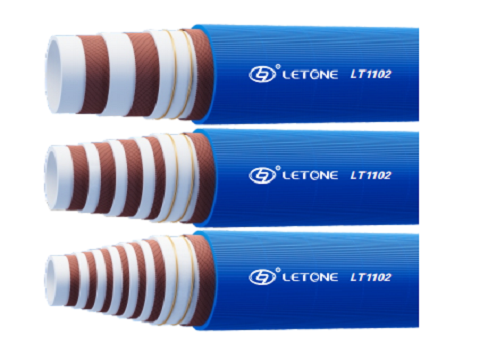In the field of oil and gas exploration and development, well control safety is the cornerstone of ensuring smooth operations and the safety of personnel and equipment. Among them, the API 16D-BOP (Blowout Preventer Operations) well control hose is an important component of the well control system, and its performance and reliability are directly related to the effective control of wellhead pressure in emergency situations. This article aims to explore in depth the design principles, technical specifications, application scenarios, maintenance, and future development trends of API 16D-BOP well control hoses, in order to provide reference and inspiration for industry colleagues.
1、 Overview of API 16D-BOP Well Control Hose
The API 16D standard, also known as "Recommended Practice for Blowout Preventer Systems in Drilling and Workover Operations," is a widely used international guide for the design and operation of well control equipment. Under this standard framework, the well control hose serves as a key component connecting the blowout preventer group with fluid treatment systems (such as mud pumps, throttling and well control manifolds, etc.), and is responsible for transmitting high-pressure fluids and achieving rapid pressure control. The API 16D-BOP well control hose not only needs to withstand extreme working pressure and temperature fluctuations, but also needs to have good wear resistance, corrosion resistance, and rapid response capability.
2、 Design principles and technical specifications
design principle
The design of API 16D-BOP well control hoses follows the basic principles of high-pressure fluid transmission and is made of high-strength and high elastic materials, such as rubber or thermoplastic elastomers reinforced with special alloy steel wire braided layers. Its internal structure usually includes an inner adhesive layer, a reinforcement layer, an outer adhesive layer, and a protective cover. The materials of each layer are carefully selected to balance strength, flexibility, and durability. Both ends of the hose are equipped with standard flanges or quick couplings for easy connection and disconnection, ensuring ease of operation in emergency situations.
 technical specifications
-* * Work Pressure * *: According to the API 16D standard and specific operational requirements, the working pressure range of API 16D-BOP well control hoses is wide, covering from thousands of PSI to tens of thousands of PSI.
-* * Working temperature * *: Suitable for extreme working environments, the hose needs to be able to work stably within a temperature range of -40 ° C to+150 ° C (or higher).
-* * Size specifications * *: The inner diameter, outer diameter, and length of the hose are customized according to the wellhead layout, fluid flow rate, and pressure requirements to ensure optimal compatibility.
-Material selection: The inner rubber layer is mostly made of synthetic rubber that is resistant to oil, acid, and alkali; The reinforcement layer is made of high-strength steel wire or fiber, providing excellent resistance to blast pressure; The outer adhesive layer and protective cover focus on wear resistance, weather resistance, and corrosion resistance.
3、 Application scenarios
API 16D-BOP well control hoses are widely used in onshore and offshore oil and gas drilling platforms, as well as in well repair operations. During the drilling process, if there is abnormal invasion of formation fluids (such as blowouts or well surges), the well control hose quickly responds and guides high-pressure fluid to the choke and kill manifold for treatment, effectively controlling the wellhead pressure and preventing the situation from worsening. In addition, well control hoses also play an important role in well completion operations, oil testing, and production stages to ensure safe and smooth production.
4、 Maintenance and upkeep
Regular maintenance is crucial to ensure the long-term stable operation of API 16D-BOP well control hoses. This includes but is not limited to:
-* * Regular Inspection * *: Regularly inspect the appearance of the hose for signs of wear, aging, cracking, or corrosion to ensure that the joints are securely fastened and leak free.
-Pressure Test: Regularly conduct pressure tests on hoses to verify their pressure bearing capacity meets standards.
technical specifications
-* * Work Pressure * *: According to the API 16D standard and specific operational requirements, the working pressure range of API 16D-BOP well control hoses is wide, covering from thousands of PSI to tens of thousands of PSI.
-* * Working temperature * *: Suitable for extreme working environments, the hose needs to be able to work stably within a temperature range of -40 ° C to+150 ° C (or higher).
-* * Size specifications * *: The inner diameter, outer diameter, and length of the hose are customized according to the wellhead layout, fluid flow rate, and pressure requirements to ensure optimal compatibility.
-Material selection: The inner rubber layer is mostly made of synthetic rubber that is resistant to oil, acid, and alkali; The reinforcement layer is made of high-strength steel wire or fiber, providing excellent resistance to blast pressure; The outer adhesive layer and protective cover focus on wear resistance, weather resistance, and corrosion resistance.
3、 Application scenarios
API 16D-BOP well control hoses are widely used in onshore and offshore oil and gas drilling platforms, as well as in well repair operations. During the drilling process, if there is abnormal invasion of formation fluids (such as blowouts or well surges), the well control hose quickly responds and guides high-pressure fluid to the choke and kill manifold for treatment, effectively controlling the wellhead pressure and preventing the situation from worsening. In addition, well control hoses also play an important role in well completion operations, oil testing, and production stages to ensure safe and smooth production.
4、 Maintenance and upkeep
Regular maintenance is crucial to ensure the long-term stable operation of API 16D-BOP well control hoses. This includes but is not limited to:
-* * Regular Inspection * *: Regularly inspect the appearance of the hose for signs of wear, aging, cracking, or corrosion to ensure that the joints are securely fastened and leak free.
-Pressure Test: Regularly conduct pressure tests on hoses to verify their pressure bearing capacity meets standards.







